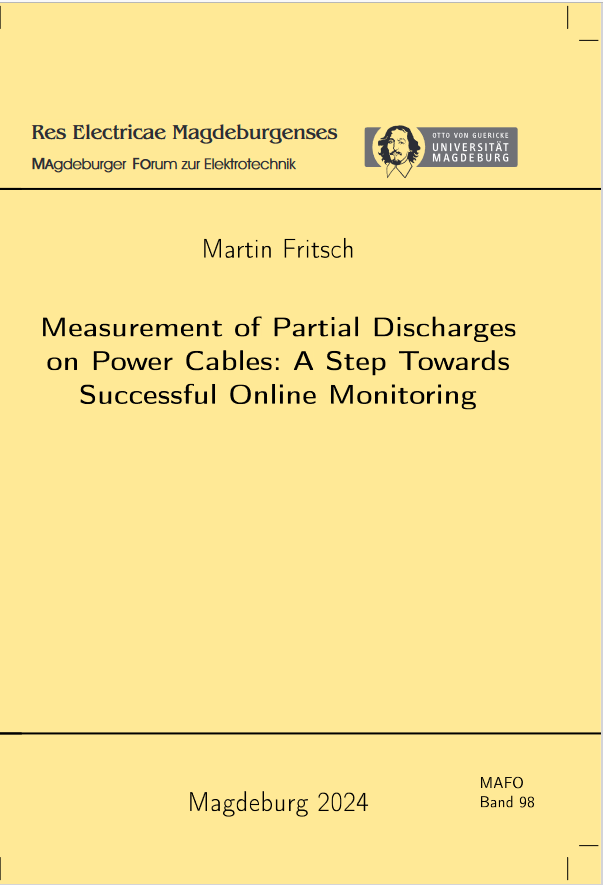Measurement of Partial Discharges on Power Cables
A Step Towards Successful Online Monitoring
DOI:
https://doi.org/10.24352/UB.OVGU-2024-050Keywords:
Elektrische Messtechnik, Prüftechnik, power cablesAbstract
The electrical distribution grids, which are mainly build on power cables, will face higher loads in the future and will thus play an increasingly important role in the power supply system. This is a problem because most power cables are already several decades old and the dielectric strength of their insulation deteriorates over time. Since the condition of the power cable insulation is usually unknown to the distribution system operators (DSO), the risk of cable failures will increase accordingly. To prevent costly supply interruptions, the DSOs require a condition-based maintenance strategy for their power cables. The most common method for condition monitoring is partial discharge (PD) measurement, which detects small electrical discharges occurring at insulation defects at an early stage. However, today’s PD sensors are usually not designed for continuous online monitoring and are often very expensive, which limits their usefulness for DSOs. This dissertation thesis aims to develop a cost-effective and reliable PD sensor for online monitoring of power cables. The research focuses on improving high-frequency current transformers (HFCT) to overcome magnetic saturation issues and optimize their sensitivity. The research begins by investigating the nature of PD signals transmitted along power cables and their measurable bandwidth. An analytical power cable model is developed to simulate the transmission process and determine the remaining bandwidth at the cable ends where the PD sensors are installed. Based on these findings, an optimized HFCT sensor design is investigated, which guarantees maximum sensitivity to PD pulses. For this purpose, an analytical HFCT model is derived. However, the challenge with HFCTs is their susceptibility to magnetic saturation caused by the high 50 Hz operating currents of power cables. To address this issue, an improved split-core HFCT design is proposed, capable of self-adjusting its air gap length based on the saturation level. A microcontroller controls a servo motor to optimize the air gap length in real-time, ensuring maximum sensitivity without saturation. This solution enables online monitoring of power cables using HFCT technology. The key contributions of this thesis include the improved split-core HFCT design with self-adjusting air gap length, an analytical power cable model for HF signal transmission, an analytical HFCT model for design optimization, and a method for real-time PD signal evaluation. Future work should focus on further optimizing the sensor design and integrating advanced methods for PD detection and signal evaluation.
Downloads
Published
Issue
Section
License
Copyright (c) 2024 Res Electricae Magdeburgenses. Magdeburger Forum zur Elektrotechnik

This work is licensed under a Creative Commons Attribution-ShareAlike 4.0 International License.

